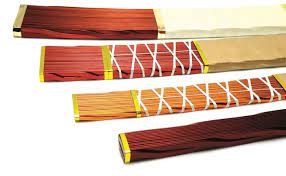what is continuously transposed cable?
A continuously transposed cable (CTC) is a type of electrical cable designed to reduce losses caused by electromagnetic interference (EMI) and eddy currents. This type of cable is commonly used in high-voltage applications, such as power transmission and distribution systems, and in high-frequency applications, such as radio frequency (RF) transmission lines.
The design of a CTC involves twisting individual strands of copper or aluminum wire together in a continuous pattern, with each strand positioned at a slightly different angle to the others. This twisting pattern helps to evenly distribute the magnetic fields generated by the current flowing through the cable, reducing the eddy currents that can lead to power losses and heating. In addition, the twisting pattern helps to cancel out the electromagnetic interference (EMI) that can be generated by adjacent cables or other sources.
One of the main advantages of CTCs is their high current carrying capacity. Because of the even distribution of magnetic fields and the cancellation of EMI, CTCs can carry more current than traditional cables of the same size and material. This makes them ideal for high-voltage power transmission and distribution, where minimizing power losses and maintaining efficiency is critical.
Another advantage of CTCs is their flexibility. The twisting pattern allows the cable to be more pliable and easier to handle than traditional cables, which can be stiff and difficult to bend. This makes CTCs easier to install and more versatile, as they can be used in a variety of applications where traditional cables may not be suitable.
In addition to power transmission and distribution, CTCs are also used in high-frequency applications, such as RF transmission lines. In these applications, the even distribution of magnetic fields and cancellation of EMI can help to maintain signal integrity and minimize losses, leading to improved performance and reliability.
In conclusion, continuously transposed cables are an important type of electrical cable used in a variety of high-voltage and high-frequency applications. Their unique twisting pattern helps to reduce power losses and maintain efficiency, while also providing flexibility and versatility. As technology continues to evolve, CTCs are likely to remain a critical component of our electrical infrastructure for many years to come.
